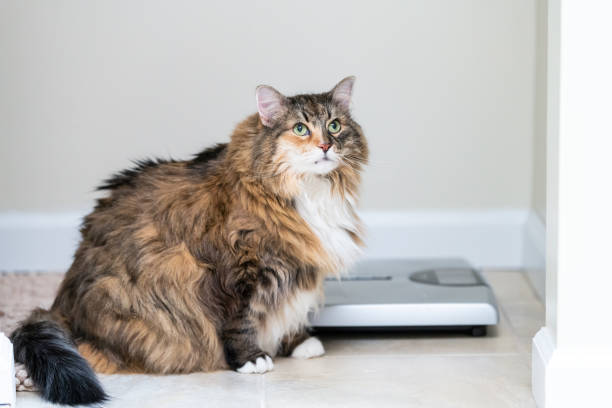The amount of exercise needed may vary, depending on the breed and age of your cat.

Picture: iStock
Cats are probably not as excited as dogs have been to have their humans around during lockdown, as they are such independent creatures.
However, something that will probably have perked them up considerably is the fact that snacks are probably being handed out a lot more frequently and this undoubtedly will lead to weight gain!
The quickest way to determine kitty’s ideal weight is to run your hands along its sides and if you can feel the ribs with a tiny bit of pressure, then your cat is most probably the ideal weight.
If you have to press firmly your cat might be overweight – and if you can’t feel ribs at all, then your cat is likely an obese “fat cat” – not the corporate kind on Wall Street, but simply a house cat that is too chubby.
Portrayals of cartoon cats, like popular Garfield, lull us into thinking that an overweight cat is amusing. The reality couldn’t be further from the truth.
Obesity can lead to serious health problems and in the long run become costly for the pet owner. It can also result in the cat not wanting to engage in play, normal hygiene or grooming, which could, in turn, lead to depression and anxiety.
If you are concerned or cannot determine whether your cat is overweight, the best option is to consult your vet.

Picture: iStock
Could you be part of the problem?
Portion control is key: do not overfeed your cat. If you are reducing their food, it may result in meowtastic complaints of hunger in the middle of the night, but stick to it.
You can also make mealtimes more challenging by using a puzzle toy or making your cat “hunt” for food.
Try getting your cat active by using games and initiating play sessions. You can try getting it to start chasing a toy or leaping after something like string to engage the cat’s hunting instinct.
Pawfect’s popular toy suggestions for cat owners are cat tennis balls, catnip toys, wrestle and scratch, or a cat hammock.
Start with one play session of 10 minutes a day and move up to two 15 min play sessions a day. The amount of exercise needed may vary, depending on the breed and age of your cat.
These play sessions will be great bonding sessions and also get you away from your computer and the stresses of life.
You could invest in an indoor tree climber as this is a great way for your cat to use energy and their natural climbing abilities.
Like humans, cats benefit from exercise and activity.
Swainson is the co-founder of Pawfect
For more news your way, download The Citizen’s app for iOS and Android.
Download our app




